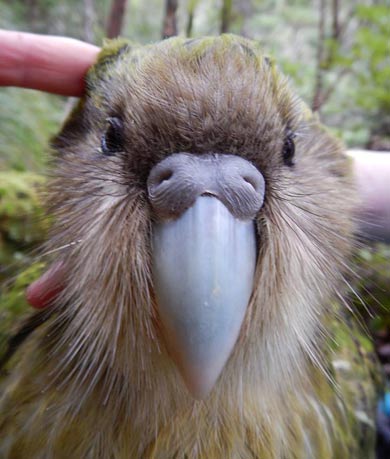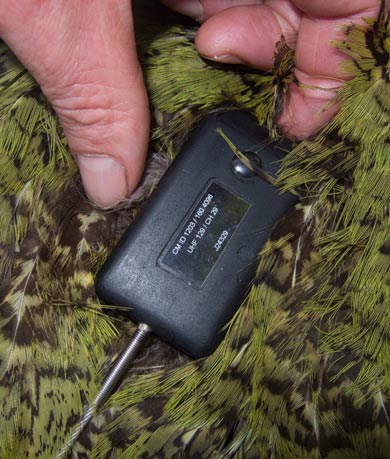Blake’s death has been a big shock to the team. Kākāpō are normally very resilient birds and this is the first death of this kind in the known management history of kākāpō – in more than 6,500 recorded captures.
Transmitters are changed on kākāpō annually – and this is often the only time we handle a kākāpō. A routine health check is also done at this time.

Blake the kākāpō sadly died soon after a transmitter change
Image: Andrew Digby | DOC

Transmitter changes are a crucial part of the recovery programme
Image: Andrew Digby | DOC
The capture and time being held were in normal range, but the weather was not. Anchor Island, like the rest of the country, is in the grip of a period of hot dry conditions – quite unusual for a wet, windy Fiordland island.
During transmitter changes, staff do their best to keep kākāpō in shady breezy spots, and do them as quickly and calmly as possible. Sadly, Blake collapsed on release. He was put into cool dark hollow and monitored, but died 20 minutes later.
Blake appeared to otherwise be in good health, but was very heavy as he was building up fat reserves for the months of booming ahead of him.
Transmitter changes are a crucial part of the Kākāpō Recovery Programme. Without them we would not be able to manage the remote kākāpō population and they would most likely have dwindled to just a few dozen birds.
While extremely rare, the team have since immediately implemented additional steps to prevent this happening again. These include; working in the cooler evenings, releasing any birds that are panting on capture and having our most experienced staff changing transmitters on birds when temperatures are high. First aid guidelines for heat stress are also being developed.
Blake has two surviving offspring and his genetics are relatively well represented in the population.